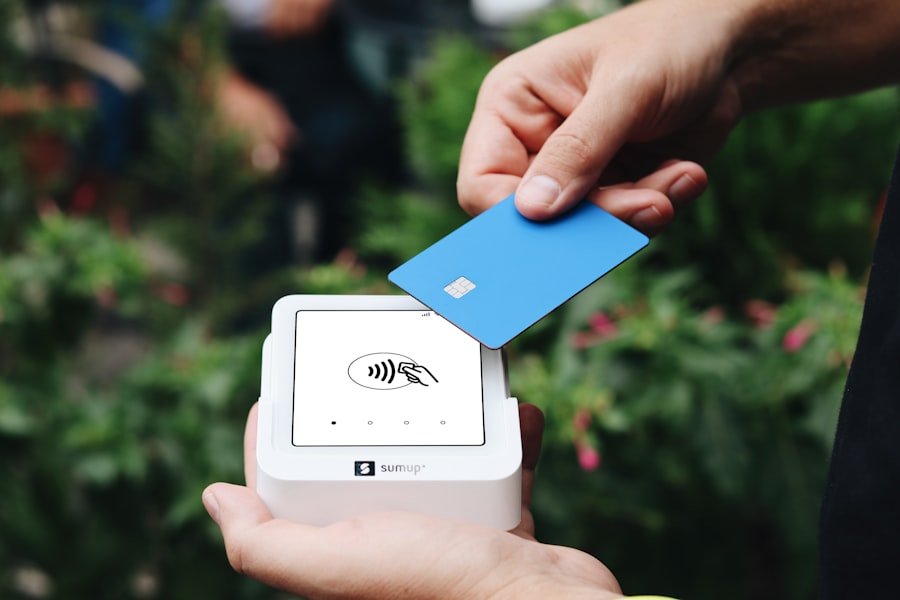In the digital age, social media has become an integral part of daily life, especially for younger generations. High school students are among the most active users of platforms like Instagram, Snapchat, TikTok, and Twitter, making these channels a fertile ground for marketing initiatives. Social media marketing in high schools is not merely a trend; it represents a significant shift in how educational institutions engage with their students, parents, and the broader community.
By leveraging social media, high schools can enhance communication, promote events, and foster a sense of community among students and staff. This approach allows schools to reach their audience where they are most active, creating a more dynamic and interactive environment. The introduction of social media marketing in high schools also reflects broader societal changes in communication and information dissemination.
Traditional methods of outreach, such as newsletters and bulletin boards, are increasingly being supplemented or replaced by digital strategies that resonate more with today’s youth. As schools navigate this new landscape, they must consider the implications of their online presence, including the potential for both positive engagement and negative backlash. Understanding the nuances of social media marketing is essential for high schools aiming to create a vibrant online community that supports educational goals while also addressing the unique challenges posed by this medium.
Key Takeaways
- Social media marketing in high schools can be a valuable tool for reaching and engaging with students.
- Implementing social media marketing in high schools can lead to increased brand awareness and student engagement.
- Challenges of introducing social media marketing in high schools include privacy concerns and the need for proper training and guidelines.
- Effective strategies for social media marketing in high schools include creating engaging content and utilizing analytics to measure success.
- Teachers and administrators play a crucial role in overseeing and guiding social media marketing efforts in high schools.
The Benefits of Implementing Social Media Marketing in High Schools
Real-Time Information Sharing
Implementing social media marketing in high schools offers a significant advantage: enhancing communication between the school and its stakeholders. Social media platforms provide an immediate and effective way to disseminate information about school events, academic achievements, and important announcements. This real-time communication fosters a sense of belonging and keeps students, parents, and faculty informed and engaged.
Boosting Student Engagement
Social media marketing can significantly boost student engagement and participation in school activities. By creating visually appealing content that highlights student achievements and showcases school spirit, schools can encourage students to take pride in their institution. Engaging posts that feature student work, highlight extracurricular activities, or celebrate diversity can foster a sense of community and belonging among students.
Empowering Student Voices
Social media can serve as a platform for students to express their opinions and share their experiences, further enhancing their connection to the school environment. This two-way communication not only strengthens relationships but also empowers students to take an active role in shaping their school’s narrative.
The Challenges of Introducing Social Media Marketing in High Schools

Despite the numerous benefits associated with social media marketing in high schools, there are also significant challenges that institutions must navigate. One of the primary concerns is the potential for negative interactions or cyberbullying that can arise from increased online engagement. High school students are at a critical developmental stage where peer relationships are paramount, and social media can sometimes exacerbate conflicts or create an environment where bullying can thrive.
Schools must be vigilant in monitoring their online presence and establishing clear guidelines for acceptable behavior to mitigate these risks. Another challenge lies in the need for adequate training and resources for staff members tasked with managing social media accounts. Many educators may not be well-versed in digital marketing strategies or may lack the time to dedicate to social media management amidst their other responsibilities.
This gap can lead to inconsistent messaging or missed opportunities for engagement. Furthermore, schools must also consider privacy concerns related to sharing student information online. Striking a balance between promoting school activities and protecting student privacy is crucial, requiring careful planning and adherence to legal guidelines regarding student data.
Strategies for Effective Social Media Marketing in High Schools
To effectively implement social media marketing in high schools, institutions should develop a comprehensive strategy that aligns with their goals and values. One effective approach is to create a content calendar that outlines planned posts, themes, and key events throughout the academic year. This proactive planning allows schools to maintain a consistent online presence while ensuring that they highlight important milestones such as graduation ceremonies, sports seasons, and academic achievements.
By scheduling posts in advance, schools can also allocate time for engagement with followers, responding to comments and messages promptly. Additionally, high schools should consider involving students in the content creation process. Empowering students to contribute ideas or even manage social media accounts can lead to more authentic and relatable content that resonates with their peers.
Student-led initiatives can include campaigns that promote school events or highlight community service projects. This not only fosters a sense of ownership among students but also encourages creativity and collaboration. Furthermore, schools should utilize analytics tools available on various platforms to track engagement metrics and adjust their strategies based on what resonates most with their audience.
The Role of Teachers and Administrators in Social Media Marketing in High Schools
Teachers and administrators play a pivotal role in the success of social media marketing initiatives within high schools. Their involvement is crucial not only for content creation but also for establishing a culture of responsible digital citizenship among students. Educators can model appropriate online behavior by demonstrating how to engage positively on social media platforms while emphasizing the importance of respectful communication.
By integrating discussions about social media ethics into the curriculum, teachers can equip students with the skills needed to navigate the digital landscape responsibly. Moreover, administrators must take an active role in overseeing social media efforts to ensure alignment with the school’s mission and values. This includes developing policies that govern social media use within the school community and providing training for staff members on best practices for online engagement.
Administrators should also encourage collaboration among teachers across different departments to create cohesive messaging that reflects the school’s identity. By fostering an environment where educators feel supported in their social media endeavors, schools can maximize the impact of their marketing efforts while promoting a positive online culture.
The Impact of Social Media Marketing on High School Students

Enhancing School Spirit and Participation
When schools actively promote events and achievements through social media channels, students are more likely to feel connected to their institution. This connection can lead to increased participation in extracurricular activities, improved attendance at school events, and a greater sense of pride in their school community.
Fostering Inclusivity and Diversity
As students see their peers celebrated online, they may be inspired to contribute their own talents and participate more fully in school life. Furthermore, social media marketing can serve as a powerful tool for fostering inclusivity within high schools. By highlighting diverse voices and experiences through carefully curated content, schools can create an environment where all students feel valued and represented.
Advocacy and Support
Campaigns that celebrate cultural diversity or promote mental health awareness can resonate deeply with students who may feel marginalized or overlooked. In this way, social media becomes not just a marketing tool but also a platform for advocacy and support, helping students navigate the complexities of adolescence while reinforcing positive values within the school community.
Case Studies of Successful Social Media Marketing in High Schools
Several high schools have successfully harnessed the power of social media marketing to enhance their visibility and strengthen community ties. For instance, one high school implemented a dedicated Instagram account showcasing student artwork and projects as part of an initiative to promote its arts program. By regularly posting high-quality images of student creations along with engaging captions that tell stories about the artists’ inspirations, the school not only attracted attention from prospective students but also fostered pride among current students who felt recognized for their talents.
Another notable case involved a high school that utilized Facebook Live to broadcast its annual talent show. By streaming the event live on social media, the school was able to reach a wider audience beyond just those physically present in the auditorium. Parents who could not attend were able to watch their children perform from home, while alumni were able to reconnect with their former school community.
The event generated significant online engagement through comments and shares, creating a sense of excitement around school events that had previously been limited to those who could attend in person.
The Future of Social Media Marketing in High Schools
As technology continues to evolve at a rapid pace, so too will the landscape of social media marketing in high schools. Emerging platforms and trends will likely shape how schools communicate with their communities moving forward. For instance, short-form video content has gained immense popularity through platforms like TikTok; thus, high schools may need to adapt their strategies to incorporate this format effectively.
Engaging video content that showcases student life or highlights school events could become a cornerstone of future marketing efforts. Moreover, as concerns about mental health and digital well-being grow among educators and parents alike, high schools will need to navigate these issues thoughtfully within their social media strategies. Balancing engagement with responsible usage will be paramount as institutions strive to create positive online environments while promoting healthy interactions among students.
Ultimately, the future of social media marketing in high schools will hinge on adaptability—schools must remain open to new ideas while staying true to their core values as they engage with an ever-changing digital landscape.
FAQs
What is social media marketing?
Social media marketing is the use of social media platforms to connect with your audience to build your brand, increase sales, and drive website traffic. This involves publishing great content on your social media profiles, listening to and engaging your followers, analyzing your results, and running social media advertisements.
Why is social media marketing important for high schools?
Social media marketing is important for high schools as it provides a platform to engage with current students, prospective students, parents, and the community. It can be used to showcase the school’s achievements, share important information, and create a sense of community.
What are the benefits of social media marketing for high schools?
The benefits of social media marketing for high schools include increased brand awareness, improved communication with students and parents, the ability to showcase achievements and events, and the potential to attract prospective students.
What are some popular social media platforms for high school social media marketing?
Popular social media platforms for high school social media marketing include Instagram, Facebook, Twitter, and TikTok. Each platform has its own unique features and audience demographics, so it’s important to choose the platforms that best align with the school’s goals.
What are some best practices for social media marketing in high schools?
Some best practices for social media marketing in high schools include creating a content calendar, engaging with followers, using multimedia content such as videos and photos, and monitoring and analyzing the performance of social media posts. It’s also important to maintain a professional and positive online presence.


























